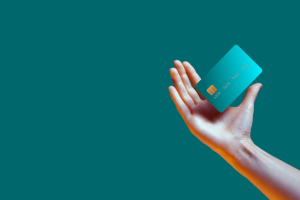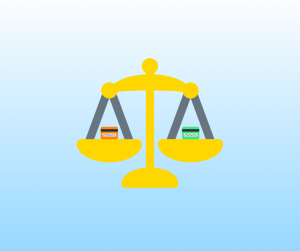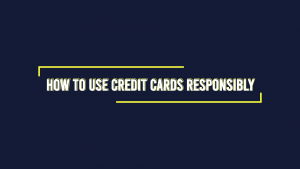Complete Guide to Opening an Unsecured Credit Card

How to Break Free From Debt and Get Ahead With Your Tax Refund: Pay Bills, Settle Debt, & Grow Savings
02/25/2024
Want to See Your FICO Score for Free? Here’s How to Do It
03/04/2024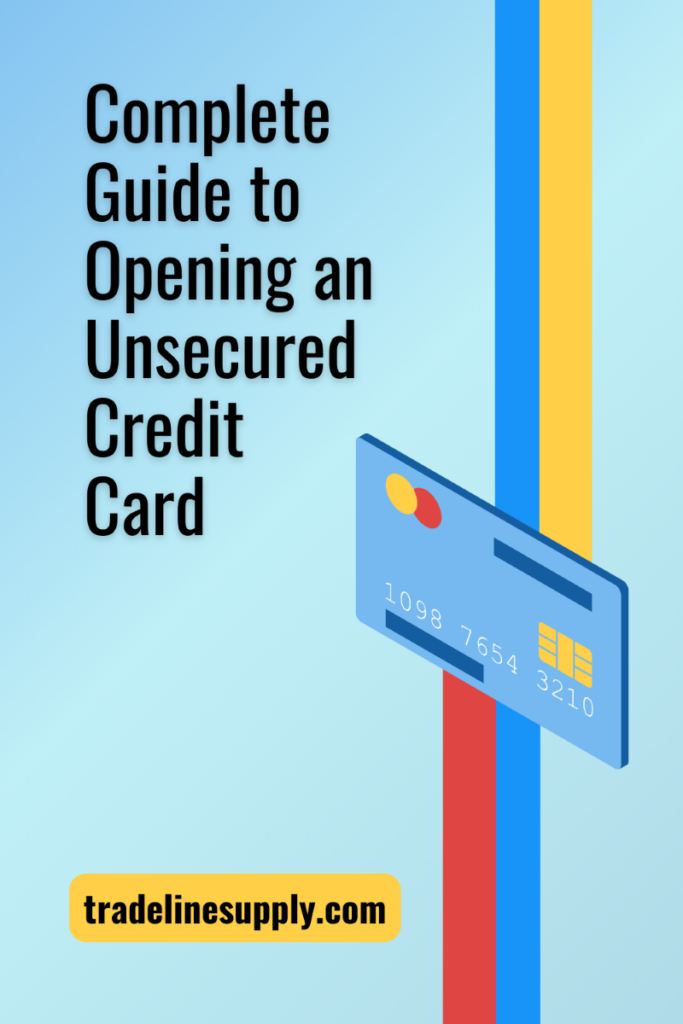 When you think of credit cards, unsecured credit cards likely come to mind first. While some financial gurus preach about the dangers of opening an unsecured credit card, the reality is that an unsecured credit card can be a useful financial tool.
When you think of credit cards, unsecured credit cards likely come to mind first. While some financial gurus preach about the dangers of opening an unsecured credit card, the reality is that an unsecured credit card can be a useful financial tool.
If you aren’t sure where to get started, you are in the right place. We’ve compiled a full guide on how to open an unsecured credit card. Let’s dive in!
What Is an Unsecured Credit Card?
An unsecured credit card is a type of credit card that doesn’t require you to make a cash deposit to get started. Unlike secured credit cards, an unsecured credit card issuer determines your credit limit without requiring any collateral. Instead, the credit card issuer will look at factors like your credit score, income, and debt-to-income ratio when determining your credit limit. As a cardholder, you can spend up to the credit limit.
Benefits of an Unsecured Credit Card
Unsecured credit cards come with several advantages. Here’s a closer look at the benefits:
- No collateral required: When you open an unsecured credit card, you aren’t required to put any money down, so you won’t have to touch your savings to gain access to a line of credit.
- Higher credit limits: In general, unsecured credit cards come with higher credit limits than secured credit cards. If you have a big purchase to make or high expenses, this higher credit limit will come in handy.
- Rewards: Unsecured credit cards tend to offer more reward-earning opportunities than secured credit cards.
Disadvantages of an Unsecured Credit Card
Of course, every financial product has some drawbacks involved. Here’s a look at the disadvantages associated with unsecured credit cards:
- Overspending possibilities: The major danger associated with an unsecured credit card is the possibility of sliding into credit card debt. If you spend more than you can afford to pay off in a month, high interest rates can push your credit card debt to spiral out of control quickly.
- Lower approval odds: When compared with a secured credit card, unsecured credit cards come with lower approval odds.
- Higher interest rates: Credit cards are notorious for having high interest rates attached. If you carry a balance on your unsecured credit card, it can get expensive quickly.
Who Is an Unsecured Credit Card Designed For?
Unsecured credit cards are designed for individuals looking for a convenient way to make purchases. In addition to being a convenient and relatively secure payment method, many unsecured credit cards offer opportunities to earn rewards.
What to Look For in an Unsecured Credit Card
Unsecured credit cards come in many varieties. As you explore your options for opening an unsecured credit card, consider the following factors:
Interest Rates
As with all credit products, interest rates are an important factor to look at when deciding on the right credit card for your wallet. In general, credit card interest rates tend to be on the higher side.
Based on Federal Reserve data, the average credit card interest rate in May 2023 was 20.68%. However, different credit cards come with different interest rates. If you intend to carry a balance on your credit card, it’s essential to track down the best rates for your situation. But even if you plan on paying off your card every month, life might throw a wrench in your plans. If you end up with a balance, it’s easy for your balance to grow quickly. With that, it’s always a good idea to keep the interest rate attached to your credit card in mind.
Fees
Unsecured credit cards often come with a lengthy list of fees attached. While it might be impossible to find an unsecured credit card without any fees involved, it’s important to be aware of the fees before applying for a particular card. Here are some common fees to watch for:
- Annual fee
- Late payment fee
- Interest charges
- Balance transfer fees
- Foreign transaction fees
- Over-the-limit fees
As you shop for the right credit card, look for a card with minimal fees for your usage. For example, if you plan to regularly use the card overseas, seek out a credit card with no foreign transaction fee. If you want to make a balance transfer, avoiding balance transfer fees might be your top priority.
Rewards
Many unsecured credit cards offer rewards opportunities. In general, the best rewards opportunities come with credit cards that cater to individuals with a relatively high credit score. But even if you have a below-average credit score, you might be able to snag a rewards credit card. Here’s a look at the most common types of credit card rewards:
- Cash back: Many credit cards offer a chance to earn cash back on all of your spending. The cash back can help you stretch every dollar you spend a little bit further.
- Travel rewards: Some premium credit cards offer extra value in the form of travel rewards. If you want to turn your purchases into travel perks, the right unsecured credit card can help.
Perks
Most credit cards come with some perks for cardholders. The exact perks vary from card to card. But for many, the right perks can tip the scales when determining which credit card to apply for.
- Statement credits: Some cards offer statement credits, which go toward your balance, for completing specific tasks.
- Cell phone coverage: When you pay for your cell phone bill with certain credit cards, you might score cellphone protection. If the phone is damaged or stolen, the credit card issuer might help you replace it.
- Shopping discounts: Many credit cards have an arrangement with select retailers to snag you a discount.
- Airport upgrades: Some credit cards offer access to airport lounges and free checked bags to streamline your travel experience.
- Rental car insurance: If you pay for your rental car with select credit cards, it might include a damage waiver. Essentially, this means the issuer will help you pay to repair or replace the rental vehicle after an accident.
- Travel insurance: When you book a trip through some credit cards, the issuer offers travel insurance. If something out of your control happens to cancel your trip, the issuer might cover the cost.
Since many credit cards offer a suite of perks, it doesn’t hurt to scope out these details when choosing the right card for you.
How to Open an Unsecured Credit Card
Once you’ve decided that you want to open an unsecured credit card, here are the steps you’ll need to take to make it happen.
See Where Your Credit Score Stands
The first step of the process is to evaluate your credit score. You can check your credit score for free through a site like Experian. Your FICO score should fall into one of the following categories:
- Excellent: 800 to 850
- Very good: 740 to 799
- Good: 670 to 739
- Fair: 580 to 669
- Poor: 300 to 579
In addition to looking at your credit score, consider getting a free copy of your credit report through Annual Credit Report.com. When you have a copy of your credit report, you can confirm all of the information is correct. If you find an error, report it to the credit bureaus to have it removed.
All of this information about your credit situation will help you determine which kind of unsecured credit card to apply for, if any. For example, you might determine that you have an excellent credit score, which puts premium rewards credit cards within reach. But if you find out that your credit score is relatively poor, you might need to start with a credit card for bad credit that offers fewer rewards.
Decide on What You Want to Get Out of a Credit Card
A credit card is a financial tool. But it’s difficult to use any tool efficiently unless you know what you want to use it for. When it comes to picking a credit card, it’s helpful to decide what you want to get out of the credit card in advance.
A few popular reasons to open an unsecured credit card include easier access to a line of credit, the convenience of paying with a credit card, building your credit score, or earning specific rewards. For example, someone who simply wants an easier way to cover purchases will likely gravitate toward different credit cards than someone who wants to push their travel to the limit with the help of travel rewards.
Getting clear on what you want will help you narrow the crowded field of credit card options.
Research Your Options
When you start looking for a credit card, you’ll quickly realize you have countless options. Instead of jumping on the first offer that lands in your mailbox, take the time to research your options.
If you want help getting started, check out a list of my top credit cards below:
- Chase Freedom Unlimited Credit Card
- Capital One Venture X Rewards Credit Card
- Petal 2 Credit Card
Of course, the credit cards above are just the tip of the iceberg. Explore all of your options before applying for a new credit card.
Submit Your Application
You’ve found the right credit card for your wallet! Now it’s time to apply for it. Most credit card issuers make it easy to apply for a credit card online.
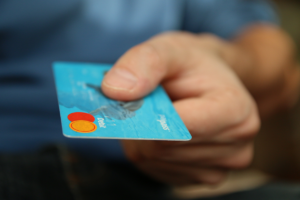
Here’s some of the information you should expect to provide:
- Name
- Date of birth
- Social Security number
- Annual income
- Housing payment
- Address
If you have a credit freeze on your credit reports to prevent fraud, lenders will not be able to check your credit and likely will not approve your application. Make sure to temporarily lift any credit freezes before applying for a new credit card.
It usually only takes a few minutes to complete a credit card application. But the approval time varies dramatically based on the situation. In some cases, you might be approved in seconds. But in other cases, you might have to wait a few days to find out if you were approved or not.
Use the Credit Card
When you have the credit card in hand, it’s time to start using it. You may be approved for a relatively high credit limit. While it might be tempting to overspend, it’s best to spend only what you can afford to pay off each month.
As you use the credit card, don’t forget to take advantage of any perks offered.
Make On-time Payments in Full Each Month
Most credit cards come with a grace period between the end of the statement cycle and the day that credit card interest starts to accumulate. In general, this grace period can last anywhere from 21 to 55 days.
If possible, pay off the entire balance before the grace period expires. Otherwise, high interest rates can push your credit card balance to grow quickly.
Even if you cannot pay off the entire balance, make it a priority to pay at least the minimum payment by the deadline.
Use Your Rewards
If you choose to open a rewards credit card, make sure to use your rewards. It’s easy to let these rewards pile up. But it’s more fun to use the points for something. Whether you use the cash back to stretch your budget further or splurge on a fun experience, using your credit card rewards is a good idea.
Frequently Asked Questions
How Do You Qualify for an Unsecured Credit Card?
When applying for an unsecured credit card, the credit card issuer will look at several factors to determine your creditworthiness. A few factors include your credit score, income, and debt-to-income ratio.
What Credit Score Do You Need for an Unsecured Credit Card?
The exact credit score you need for an unsecured credit card varies based on your credit card. In general, you’ll need a credit score that’s at least good (670). But some credit cards require an excellent credit score.
How to Get an Unsecured Credit Card Without Income Proof?
It’s difficult to get an unsecured credit card without proof of income. If you are living in the same household as someone with a verifiable income, consider applying together for the unsecured credit card.
The Bottom Line
An unsecured credit card might be the right addition to your wallet. If you are interested in opening an unsecured credit card, follow the steps above to accomplish your goal.

